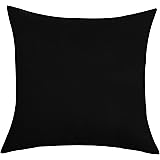While the accompanying video provides a visual journey through the aesthetics of exceptional kitchen design, the true mastery of this critical space extends far beyond mere visual appeal. Crafting a truly functional, ergonomic, and breathtaking kitchen requires a deep understanding of architectural principles, material science, and the intricate dance between form and function. This article delves into the expert-level considerations that elevate a good kitchen into an extraordinary one.
The Foundational Pillars of Superior Kitchen Design
Achieving a truly remarkable kitchen design begins with a meticulous strategic plan, anchoring aesthetic aspirations in robust practicalities. Professional designers meticulously analyze spatial dynamics and workflow, ensuring every element serves a precise purpose.
Understanding the homeowner’s lifestyle dictates the fundamental layout, whether it emphasizes culinary artistry, social interaction, or efficient daily routines. This initial phase sets the stage for a durable and dynamic culinary environment.
Mastering Kitchen Layouts: Beyond the Workflow Triangle
Contemporary kitchen design transcends the traditional work triangle, though its principles remain relevant for optimal efficiency. Today, designers often consider distinct zones—prep, cooking, cleaning, and storage—optimizing their proximity and flow.
For instance, a meticulously designed prep zone often incorporates a dedicated sink, waste disposal, and ample counter space, minimizing movement between tasks. Integrating advanced ventilation systems directly into the cooking zone ensures superior air quality and comfort.
Ergonomics and Accessibility in Modern Kitchens
Thoughtful ergonomics are paramount in any high-performance kitchen, reducing strain and enhancing usability for all occupants. This involves precise counter heights, easily accessible storage solutions, and intuitive appliance placement.
Designers frequently specify pull-out pantry shelves and soft-close drawers, optimizing storage accessibility and minimizing physical exertion. Furthermore, universal design principles ensure the space remains functional for individuals of varying mobilities, a key consideration for long-term home value.
Material Mastery: Selecting Surfaces for Durability and Aesthetics
The choice of materials in kitchen design profoundly influences both the longevity and the sensory experience of the space. Each selection, from countertops to flooring, must balance resilience with visual sophistication.
Expert designers weigh factors like porosity, thermal shock resistance, and maintenance requirements against the desired aesthetic impact. This rigorous evaluation ensures the kitchen stands the test of time, both structurally and stylistically.
Countertop Connoisseurship: Function Meets Finesse
Selecting the ideal countertop material involves a nuanced assessment of its performance characteristics and visual harmony within the broader design scheme. Quartz, known for its non-porous nature and vast aesthetic options, remains a preferred choice for many discerning clients.
Alternatively, natural stones like quartzite or marble offer unparalleled elegance but demand more rigorous maintenance protocols. Butcher block surfaces provide warmth and a renewable cutting surface, though they require consistent oiling to maintain their integrity.
The Art of Cabinetry: Storage, Style, and Structure
Cabinetry forms the skeletal structure of the kitchen, defining its capacity, organization, and stylistic identity. Custom cabinetry allows for precise integration of storage solutions, tailored to specific culinary tools and provisions.
Materials such as solid hardwoods, architectural-grade plywood, or high-density fiberboard (HDF) offer diverse performance profiles, each influencing durability and finish quality. The selection of door profiles—from Shaker to slab—further refines the aesthetic, contributing to a cohesive kitchen design.
Flooring Foundations: Enduring Beauty Underfoot
Kitchen flooring must withstand heavy traffic, spills, and temperature fluctuations, making material selection a critical decision. Engineered hardwood offers the warmth of natural wood with enhanced stability against moisture.
Porcelain or ceramic tiles provide exceptional durability and water resistance, available in a myriad of textures and finishes that emulate other natural materials. Moreover, integrating radiant floor heating beneath these surfaces significantly elevates comfort levels during colder months.
Illuminating the Heart of the Home: Advanced Lighting Strategies
Effective lighting design is a critical, often underestimated, component of a successful kitchen, influencing mood, task performance, and spatial perception. A layered approach, incorporating ambient, task, and accent lighting, is essential for optimal functionality and aesthetic appeal.
Thoughtful placement of fixtures mitigates shadows, highlights architectural features, and creates an inviting atmosphere. This sophisticated approach transforms a utilitarian space into a dynamic, multi-functional environment.
Layered Lighting: A Symphony of Illumination
Ambient lighting, typically provided by recessed fixtures or decorative pendants, establishes the general brightness of the kitchen. Task lighting, crucial for food preparation, often manifests as under-cabinet strip lighting or directed spotlights over work surfaces.
Accent lighting, like in-cabinet LEDs or display lighting, enhances specific features, such as glassware or decorative items, adding depth and visual interest. This meticulous layering ensures both practical utility and sophisticated ambiance.
Color Temperature and Dimming Controls
The color temperature of light sources significantly impacts the overall mood and perception of colors within the kitchen. Warmer temperatures (around 2700K-3000K) evoke a cozy, inviting feel, while cooler temperatures (3500K-4000K) provide a more vibrant, task-oriented environment.
Integrating dimming controls across all lighting layers offers unparalleled flexibility, allowing homeowners to adapt the light levels to various activities, from vibrant cooking sessions to intimate evening entertaining. This adaptability is central to a truly responsive kitchen design.
Integrating Innovation: Smart Appliances and Technology
The modern kitchen is increasingly a nexus of technological innovation, where smart appliances and integrated systems enhance efficiency, convenience, and culinary capabilities. Seamless integration of these technologies elevates the user experience.
From connected ovens to intelligent refrigeration units, these advancements streamline daily tasks and offer unprecedented control. Expert kitchen design considers not only the inclusion but also the intuitive orchestration of these sophisticated tools.
The Connected Kitchen Ecosystem
Smart ovens, capable of preheating remotely or executing complex cooking programs, exemplify the advancement in kitchen appliances. Refrigerators with internal cameras and inventory management systems simplify grocery planning and reduce food waste.
Beyond individual appliances, designers often integrate centralized control systems for lighting, climate, and entertainment, all accessible via touch panels or voice commands. This creates a cohesive and highly responsive home environment.
Ventilation and Water Filtration: Essential Technical Elements
High-performance ventilation systems are indispensable for maintaining air quality, efficiently removing cooking odors, steam, and grease. Downdraft, island hood, or built-in ceiling extractors offer various solutions tailored to specific kitchen designs and architectural constraints.
Similarly, advanced water filtration systems, often integrated directly into the plumbing, provide superior drinking water and protect appliances from mineral buildup. These often-overlooked technical elements significantly contribute to the long-term functionality and health aspects of the kitchen.
Sustainability and Wellness in Kitchen Design
Contemporary kitchen design increasingly incorporates principles of sustainability and promotes homeowner wellness. This involves selecting eco-conscious materials, optimizing energy and water consumption, and creating spaces that foster health and tranquility.
Designers prioritize products with low volatile organic compounds (VOCs), recycled content, and responsible sourcing. This holistic approach ensures the kitchen is not only beautiful but also environmentally responsible and health-conscious.
Eco-Conscious Material Selection
Specifying materials like reclaimed wood, recycled glass countertops, or bamboo cabinetry significantly reduces environmental impact. Furthermore, materials certified by organizations like the Forest Stewardship Council (FSC) ensure sustainable forestry practices.
Low-VOC paints, adhesives, and sealants are crucial for maintaining indoor air quality, contributing to a healthier living environment. These choices reflect a commitment to both planetary health and occupant well-being in kitchen design.
Energy and Water Efficiency
Integrating ENERGY STAR® certified appliances dramatically lowers electricity consumption without compromising performance. Induction cooktops, for example, offer superior energy efficiency compared to traditional electric or gas ranges.
Water-saving fixtures, such as low-flow faucets and dishwashers with advanced water recycling capabilities, further minimize resource use. These seemingly minor considerations collectively contribute to significant long-term savings and reduced environmental footprint within the overall kitchen design.
The Bespoke Touch: Customization and Personalization
The hallmark of truly exceptional kitchen design lies in its ability to reflect the unique personality and precise requirements of its occupants. Bespoke solutions, tailored precisely to individual tastes and lifestyles, elevate a standard space into a singular masterpiece.
This level of customization transforms the kitchen into a deeply personal sanctuary, crafted for both daily utility and profound enjoyment. It is here that the intersection of expert planning and individual vision creates a truly unique kitchen design.











